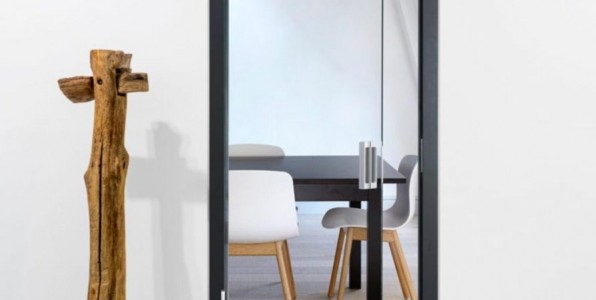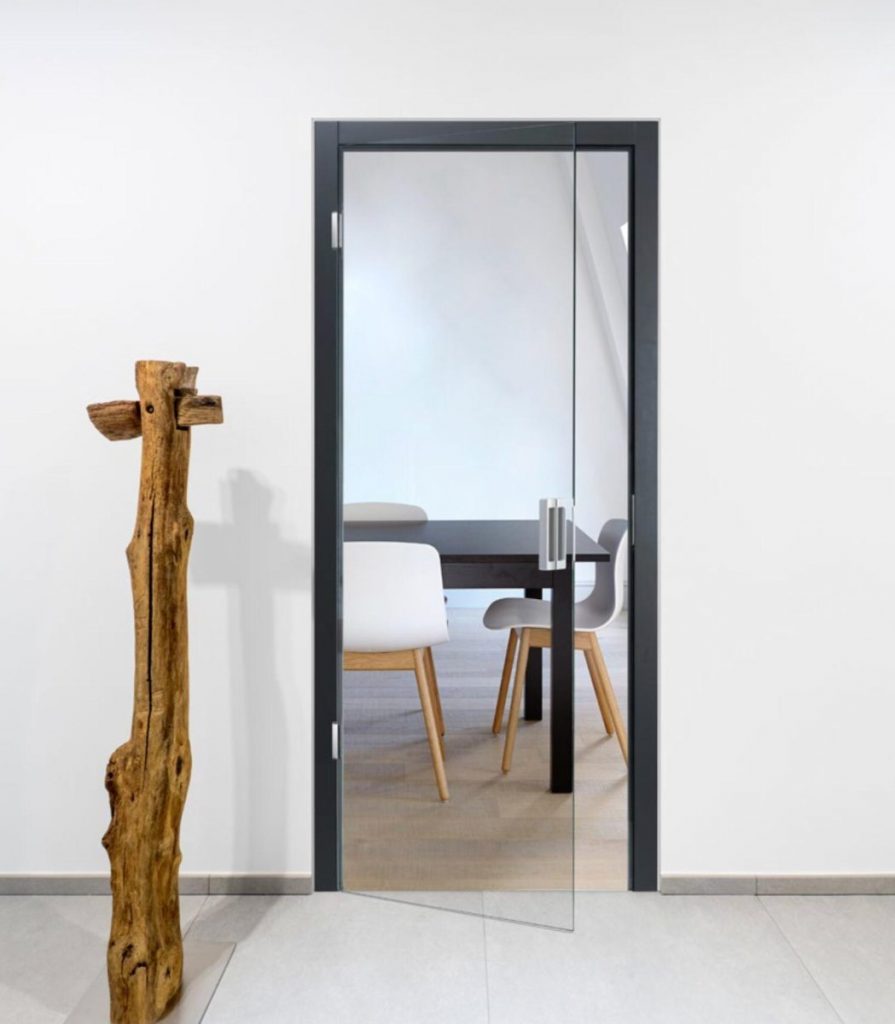Stunning glass door hardware wins innovation award

Stunning glass door hardware wins innovation award
A minimalist hardware system for glass
doors has taken top prize at the biennial Architectural Ironmongery
Specification Awards, organised by the Guild of Architectural Ironmongers (GAI) in association with the Royal
Institute of British Architects (RIBA).
The TECTUS glass hardware system,
created by Simonswerk, has been designed to maximise the
light coming through glazed panels by swapping large hinges and handles for
more discreet finishes.

Typically, door hardware installed on to
glass doors use bulky patch fittings which can impact on the final finish. The
TECTUS glass hardware system uses a concealed hinge system, magnetic closure
and handle. No glass processing is required to add any elements of the system
to the door.
Douglas
Masterson, technical manager of the GAI, said:
“In
terms of innovation, this product was head and shoulders above the rest.
Ironmongery for glass doors can be a problem area for architects and specifiers
as the hardware options available don’t always compliment more minimalist
designs, but this TECTUS glass hardware system takes that obstacle away.”
Two
products were awarded joint second place: Guardian by Exidor, and Smart Entrance by Hafele
UK.
The
Guardian is an electro-magnetic door closer. It has been designed specifically
to meet the needs of residential rooms in care homes. It has an inbuilt
anti-slam function that has been developed to control and slow the motion of
the door. The Guardian closer uses hydraulics to offer a low level control on
the door, which stops it from drifting from its open position, at the same time
allowing it to operate freely to the user.

The Smart Entrance by Hafele is a
touch-to-open latch system consisting of a set of designer flush / low
projecting handles with an electronic mortice lock. The technology used is
similar to the use of touch lamps or smartphones. Touching the Smart Entrance
handle activates the electronic mortice lock to retract the magnetic latch bolt
to allow the door to swing open. When the door is closed, the magnetic latch
bolt shoots into the magnetic striker supplied.
Third
place was given to ASSA ABLOY for the DC700G-FT Security Cam-Motion
Door Closer. It has the function of a Cam-Motion door closer with access
control, and has been designed to be multifunctional by having delayed action
and hold open options. The DC700G-FT Security Cam-Motion Door Closer also
avoids secondary bracketry (z-angles) for the locking device to improve the
final appearance of the door, and includes Cam-Motion® technology, extended
mounting plate and integrated latch bolt and extended guide-rail with
integrated escape door strike.
The best new product design and
innovation award was sponsored by allgood.
This is the first time that specific
ironmongery products have been recognised at the Architectural Ironmongery Specification
Awards. The ‘Best new
product: design and innovation’ category was created to celebrate new door and
window hardware products, allowing advancing technologies to be fully showcased
and recognised.
The Architectural Ironmongery
Specification Awards also reward excellence in the specification of
architectural ironmongery, and projects are nominated for one of four
categories: commercial and hospitality; public health and education; residential;
and international.
David Stacey, president of the GAI,
said:
“The Architectural Ironmongery
Specification Awards are unique because they reward the whole specification
team, highlighting the importance of that professional partnership between architect
and architectural ironmonger.
“These awards underline the importance
of using qualified and experienced architectural ironmongers as the driving
force in creating ironmongery schedules that are not only technically correct
but also fundamentally affect the way a building looks and performs. Those
ironmongery schedules help architects and clients minimise risk and achieve
their aesthetic vision.”
Find
out more about all of the winning projects on the GAI website.
Comments are closed